Financial Accounting Project: Sole Trader and Private Limited Company
VerifiedAdded on 2023/02/03
|16
|1557
|28
Project
AI Summary
This project report provides a comprehensive overview of financial accounting principles and practices. It begins with an introduction to financial accounting and its significance in reflecting the financial position of a business. The project is divided into two main tasks. Task 1 focuses on the double-entry bookkeeping system, including the preparation of journal entries and a general ledger, followed by the development of a trial balance. Task 2 delves into the preparation of final accounts, including adjustments for accruals, depreciation, and repayments, and culminates in producing final accounts for both a sole trader and a private limited company. The report includes examples, journal entries, and financial statements, illustrating the practical application of accounting concepts. The conclusion summarizes the key learnings and emphasizes the importance of accurate financial statement preparation and analysis. References to relevant literature and online resources are also included.
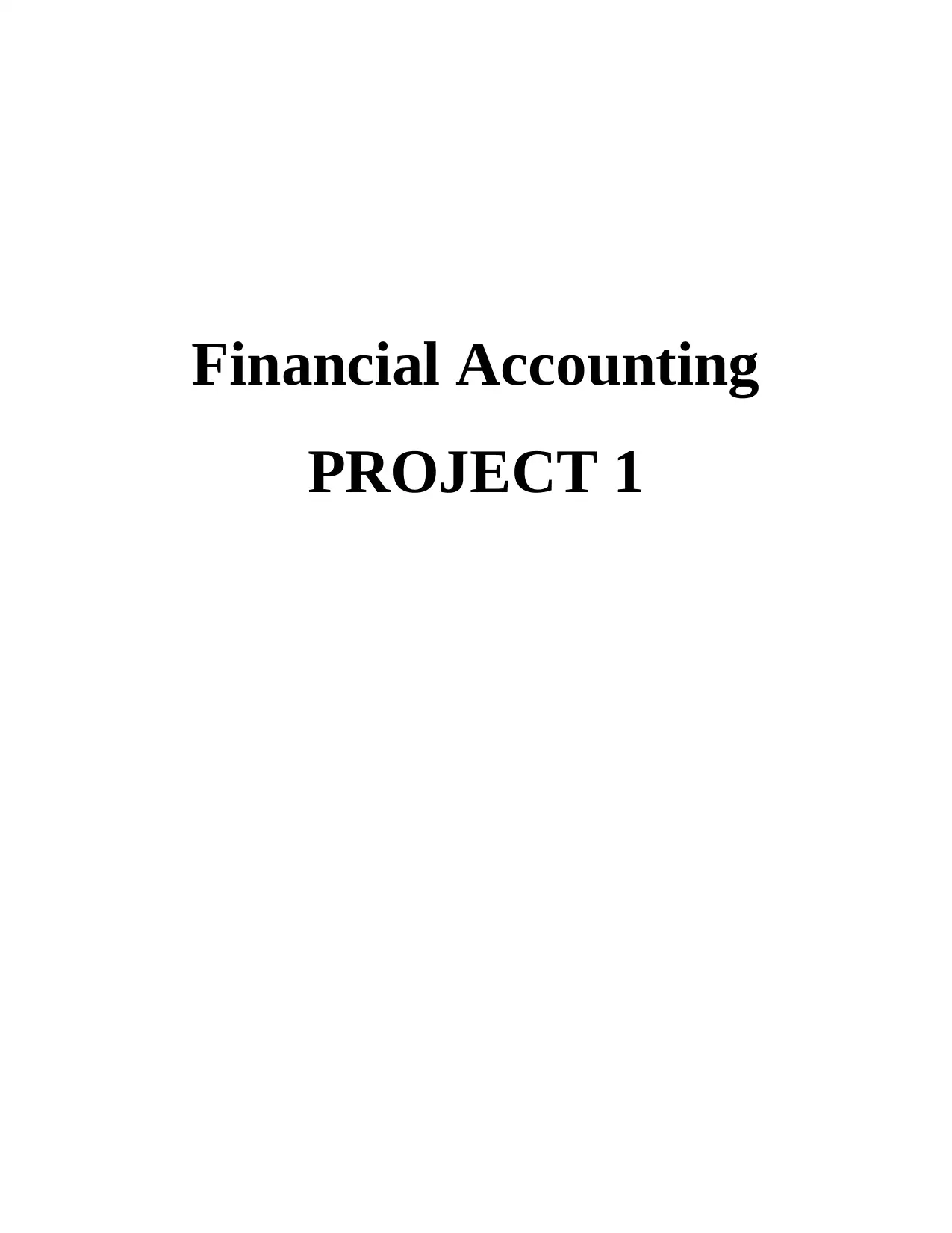
Financial Accounting
PROJECT 1
PROJECT 1
Paraphrase This Document
Need a fresh take? Get an instant paraphrase of this document with our AI Paraphraser
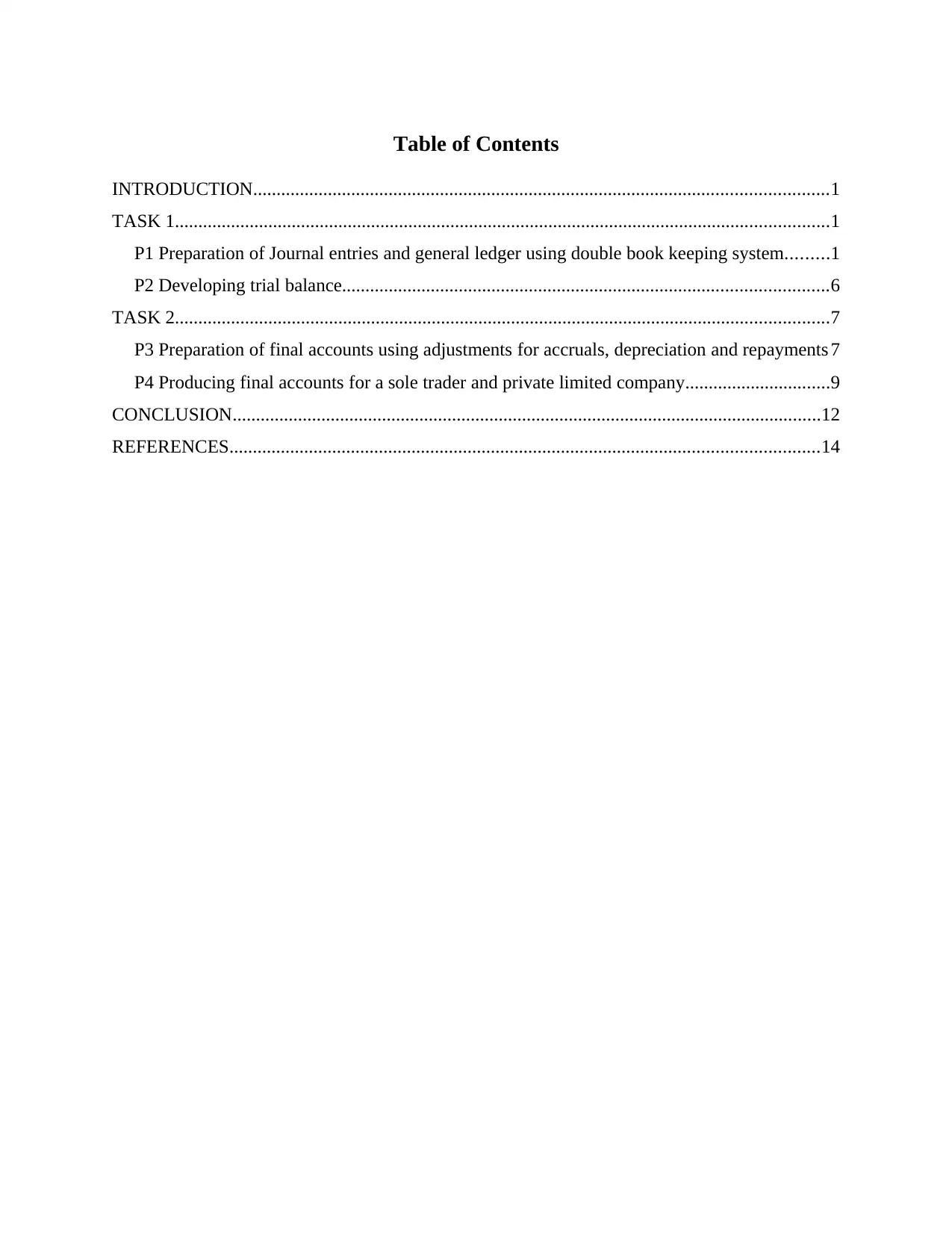
Table of Contents
INTRODUCTION...........................................................................................................................1
TASK 1............................................................................................................................................1
P1 Preparation of Journal entries and general ledger using double book keeping system.........1
P2 Developing trial balance........................................................................................................6
TASK 2............................................................................................................................................7
P3 Preparation of final accounts using adjustments for accruals, depreciation and repayments 7
P4 Producing final accounts for a sole trader and private limited company...............................9
CONCLUSION..............................................................................................................................12
REFERENCES..............................................................................................................................14
INTRODUCTION...........................................................................................................................1
TASK 1............................................................................................................................................1
P1 Preparation of Journal entries and general ledger using double book keeping system.........1
P2 Developing trial balance........................................................................................................6
TASK 2............................................................................................................................................7
P3 Preparation of final accounts using adjustments for accruals, depreciation and repayments 7
P4 Producing final accounts for a sole trader and private limited company...............................9
CONCLUSION..............................................................................................................................12
REFERENCES..............................................................................................................................14
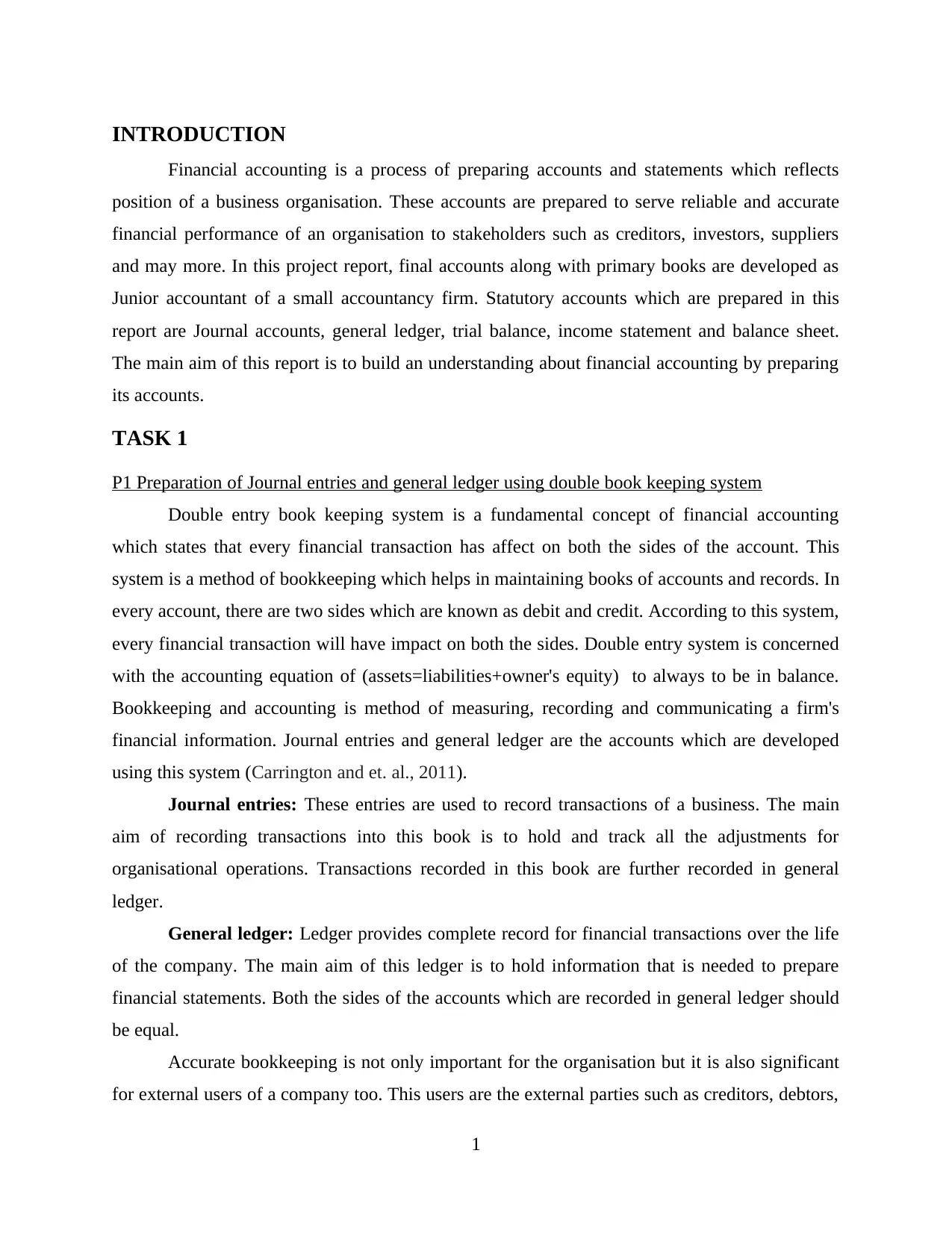
INTRODUCTION
Financial accounting is a process of preparing accounts and statements which reflects
position of a business organisation. These accounts are prepared to serve reliable and accurate
financial performance of an organisation to stakeholders such as creditors, investors, suppliers
and may more. In this project report, final accounts along with primary books are developed as
Junior accountant of a small accountancy firm. Statutory accounts which are prepared in this
report are Journal accounts, general ledger, trial balance, income statement and balance sheet.
The main aim of this report is to build an understanding about financial accounting by preparing
its accounts.
TASK 1
P1 Preparation of Journal entries and general ledger using double book keeping system
Double entry book keeping system is a fundamental concept of financial accounting
which states that every financial transaction has affect on both the sides of the account. This
system is a method of bookkeeping which helps in maintaining books of accounts and records. In
every account, there are two sides which are known as debit and credit. According to this system,
every financial transaction will have impact on both the sides. Double entry system is concerned
with the accounting equation of (assets=liabilities+owner's equity) to always to be in balance.
Bookkeeping and accounting is method of measuring, recording and communicating a firm's
financial information. Journal entries and general ledger are the accounts which are developed
using this system (Carrington and et. al., 2011).
Journal entries: These entries are used to record transactions of a business. The main
aim of recording transactions into this book is to hold and track all the adjustments for
organisational operations. Transactions recorded in this book are further recorded in general
ledger.
General ledger: Ledger provides complete record for financial transactions over the life
of the company. The main aim of this ledger is to hold information that is needed to prepare
financial statements. Both the sides of the accounts which are recorded in general ledger should
be equal.
Accurate bookkeeping is not only important for the organisation but it is also significant
for external users of a company too. This users are the external parties such as creditors, debtors,
1
Financial accounting is a process of preparing accounts and statements which reflects
position of a business organisation. These accounts are prepared to serve reliable and accurate
financial performance of an organisation to stakeholders such as creditors, investors, suppliers
and may more. In this project report, final accounts along with primary books are developed as
Junior accountant of a small accountancy firm. Statutory accounts which are prepared in this
report are Journal accounts, general ledger, trial balance, income statement and balance sheet.
The main aim of this report is to build an understanding about financial accounting by preparing
its accounts.
TASK 1
P1 Preparation of Journal entries and general ledger using double book keeping system
Double entry book keeping system is a fundamental concept of financial accounting
which states that every financial transaction has affect on both the sides of the account. This
system is a method of bookkeeping which helps in maintaining books of accounts and records. In
every account, there are two sides which are known as debit and credit. According to this system,
every financial transaction will have impact on both the sides. Double entry system is concerned
with the accounting equation of (assets=liabilities+owner's equity) to always to be in balance.
Bookkeeping and accounting is method of measuring, recording and communicating a firm's
financial information. Journal entries and general ledger are the accounts which are developed
using this system (Carrington and et. al., 2011).
Journal entries: These entries are used to record transactions of a business. The main
aim of recording transactions into this book is to hold and track all the adjustments for
organisational operations. Transactions recorded in this book are further recorded in general
ledger.
General ledger: Ledger provides complete record for financial transactions over the life
of the company. The main aim of this ledger is to hold information that is needed to prepare
financial statements. Both the sides of the accounts which are recorded in general ledger should
be equal.
Accurate bookkeeping is not only important for the organisation but it is also significant
for external users of a company too. This users are the external parties such as creditors, debtors,
1
⊘ This is a preview!⊘
Do you want full access?
Subscribe today to unlock all pages.

Trusted by 1+ million students worldwide
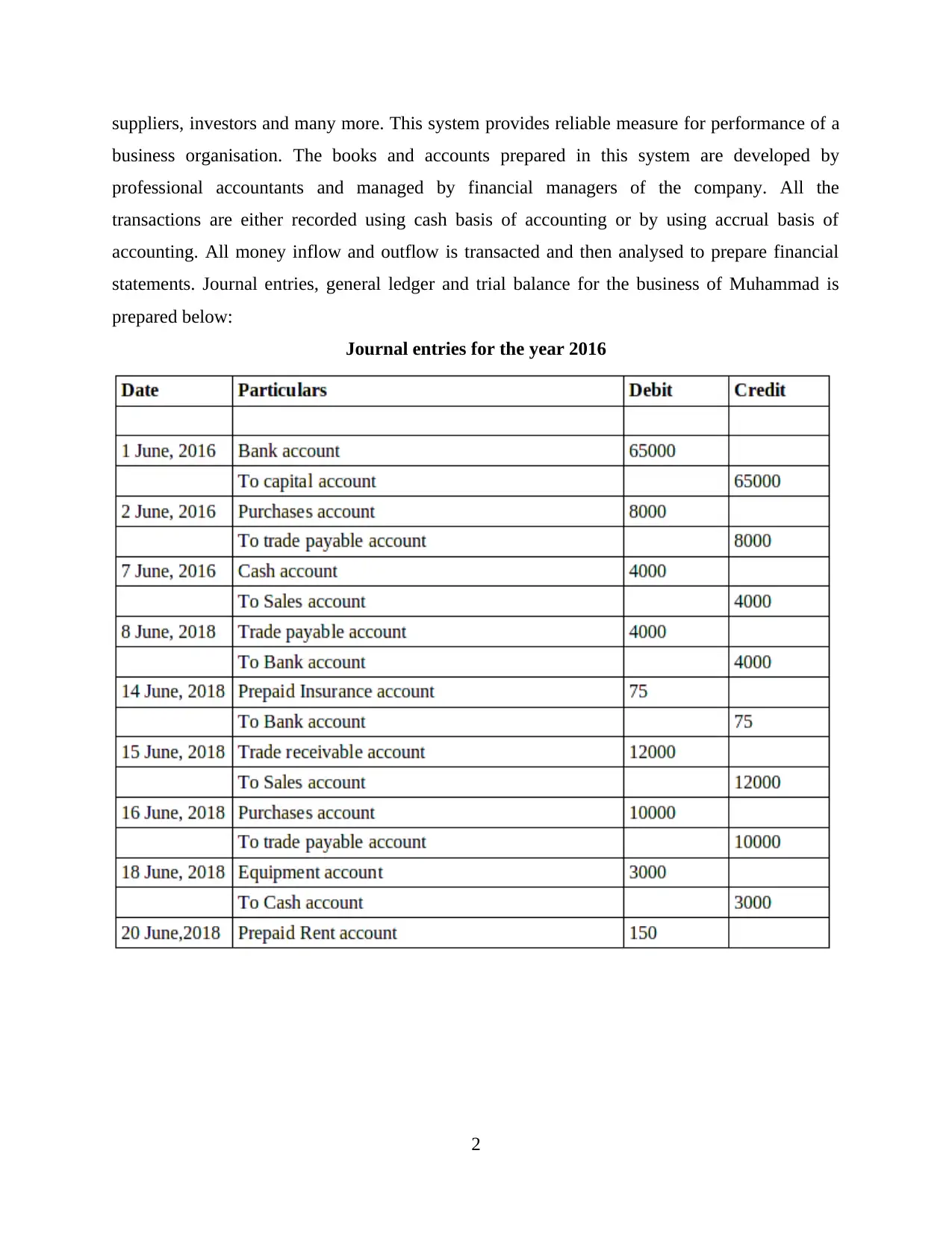
suppliers, investors and many more. This system provides reliable measure for performance of a
business organisation. The books and accounts prepared in this system are developed by
professional accountants and managed by financial managers of the company. All the
transactions are either recorded using cash basis of accounting or by using accrual basis of
accounting. All money inflow and outflow is transacted and then analysed to prepare financial
statements. Journal entries, general ledger and trial balance for the business of Muhammad is
prepared below:
Journal entries for the year 2016
2
business organisation. The books and accounts prepared in this system are developed by
professional accountants and managed by financial managers of the company. All the
transactions are either recorded using cash basis of accounting or by using accrual basis of
accounting. All money inflow and outflow is transacted and then analysed to prepare financial
statements. Journal entries, general ledger and trial balance for the business of Muhammad is
prepared below:
Journal entries for the year 2016
2
Paraphrase This Document
Need a fresh take? Get an instant paraphrase of this document with our AI Paraphraser
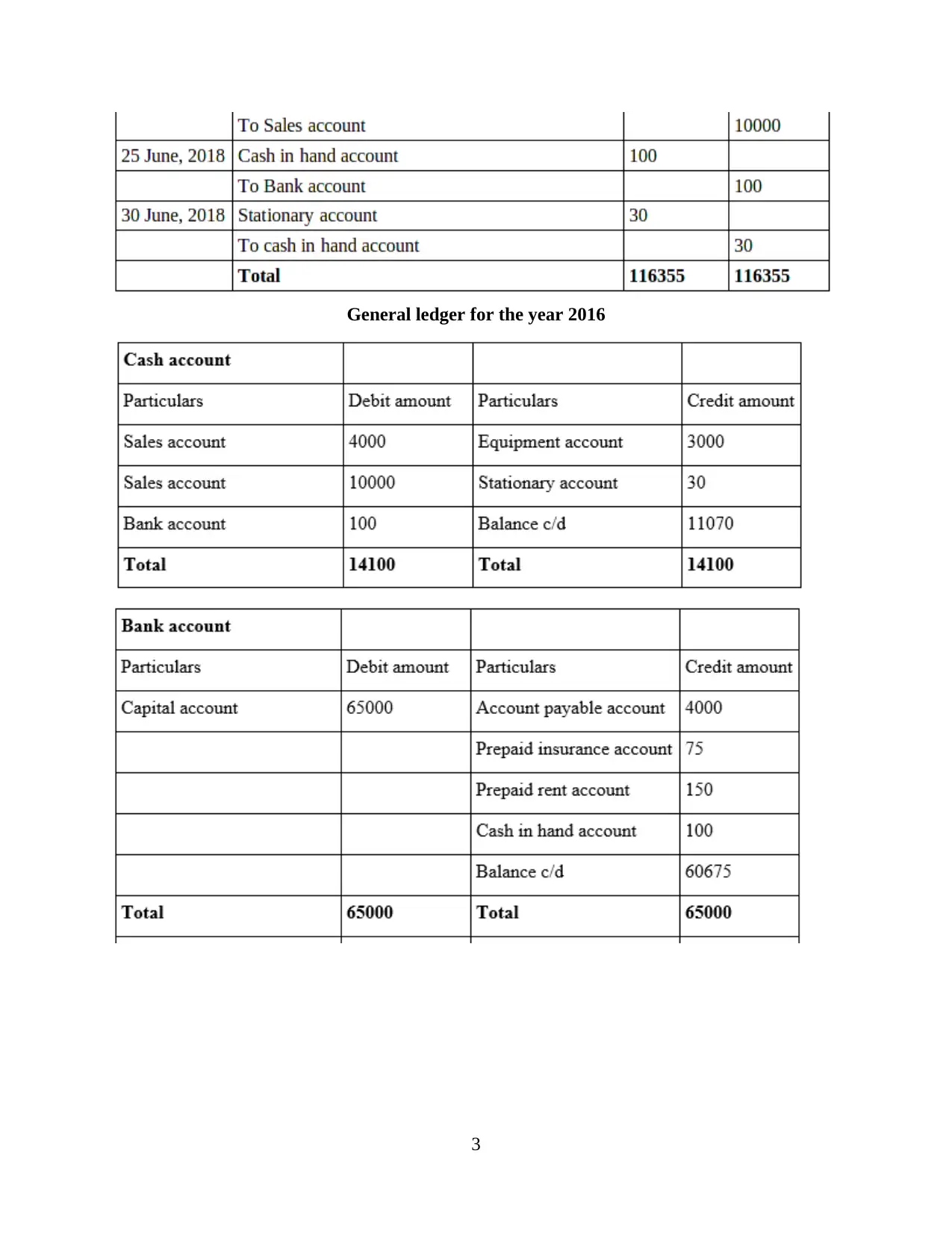
General ledger for the year 2016
3
3
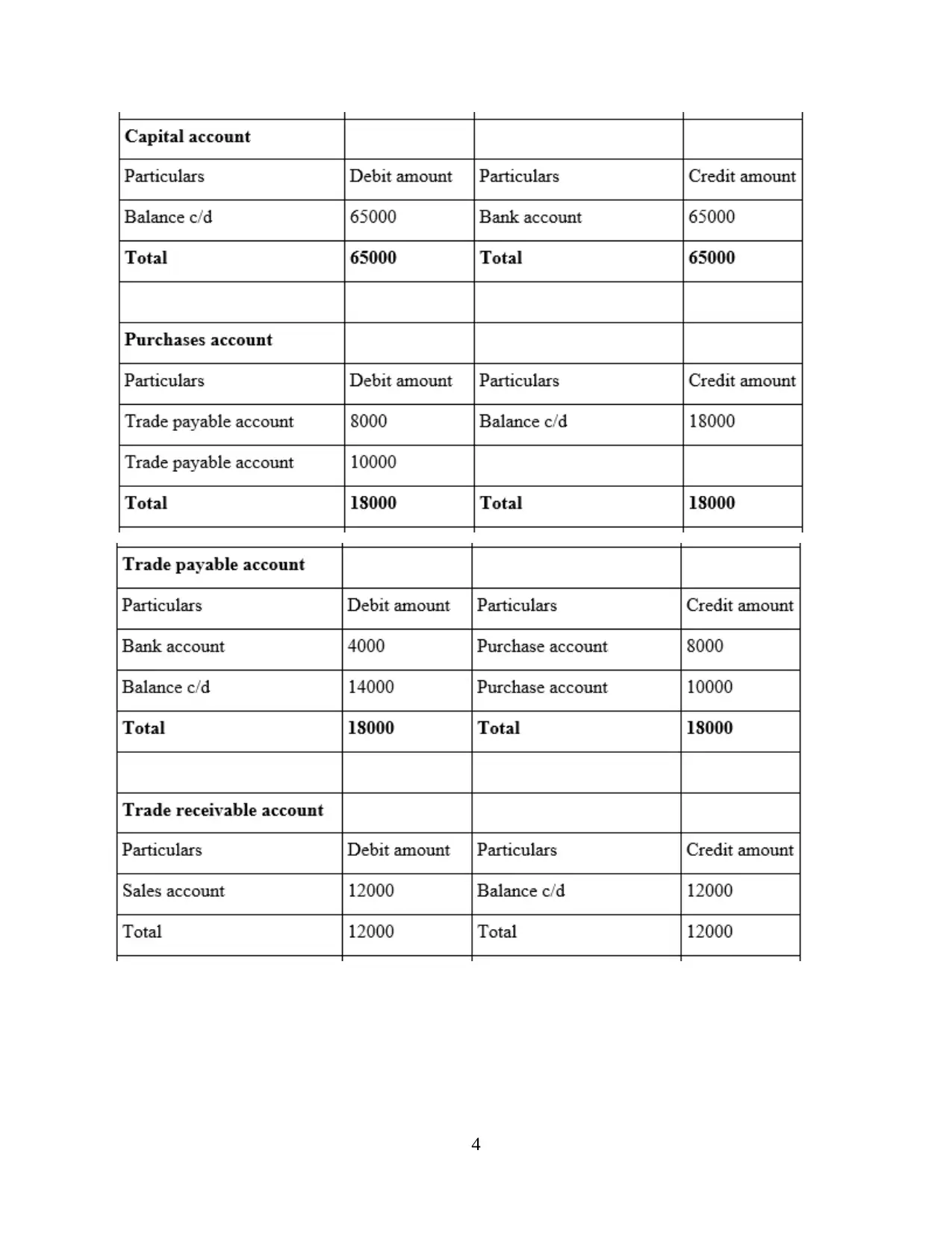
4
⊘ This is a preview!⊘
Do you want full access?
Subscribe today to unlock all pages.

Trusted by 1+ million students worldwide
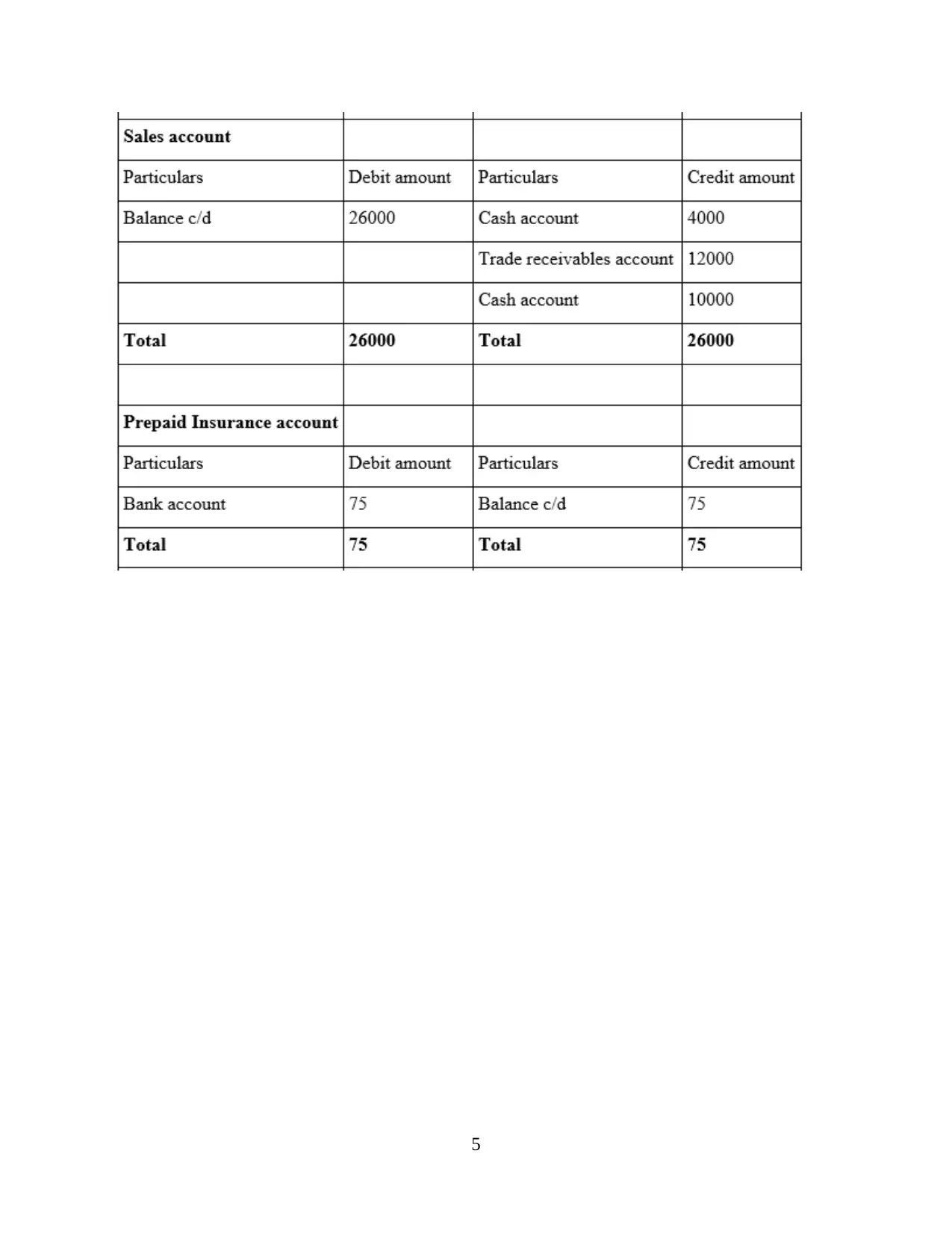
5
Paraphrase This Document
Need a fresh take? Get an instant paraphrase of this document with our AI Paraphraser
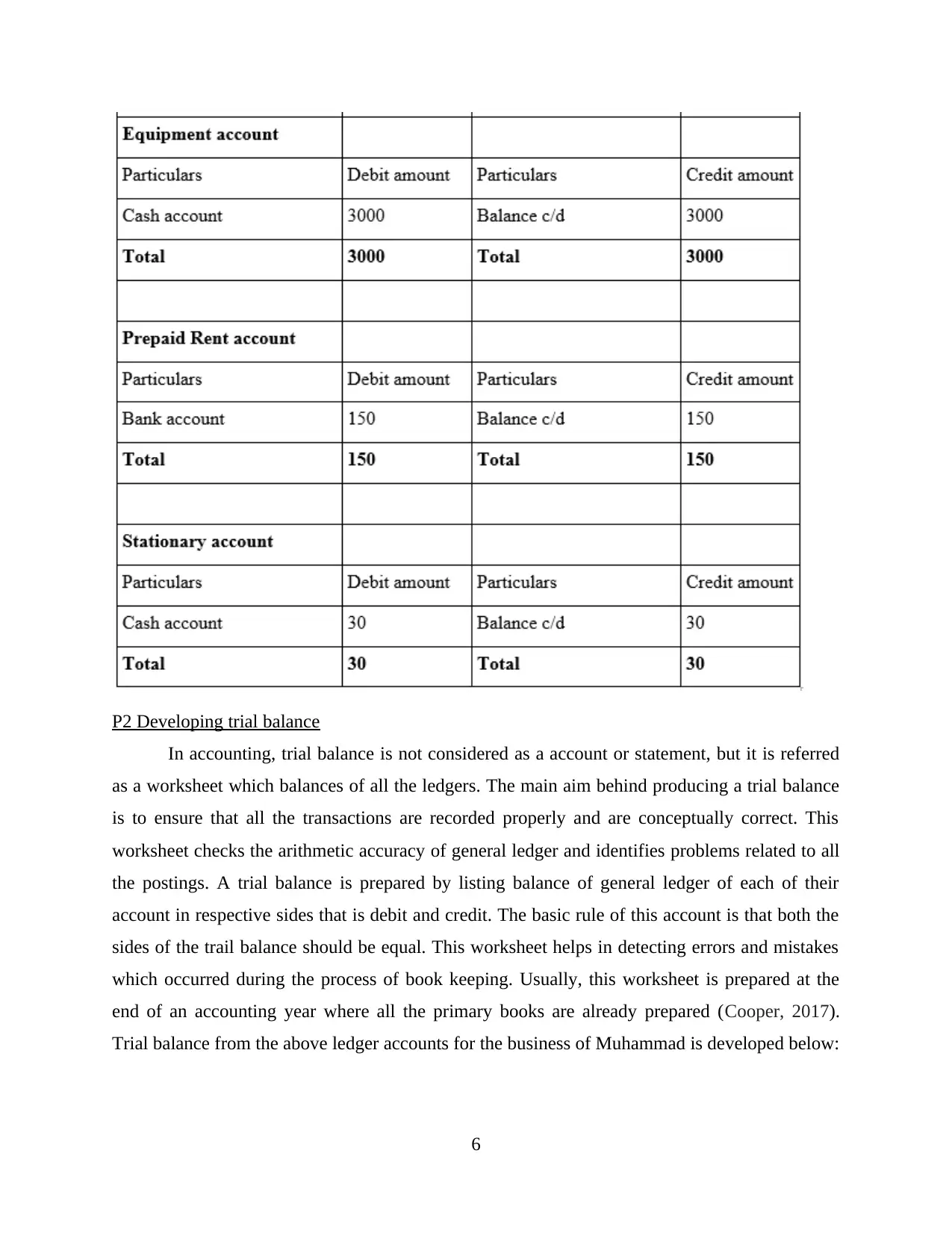
P2 Developing trial balance
In accounting, trial balance is not considered as a account or statement, but it is referred
as a worksheet which balances of all the ledgers. The main aim behind producing a trial balance
is to ensure that all the transactions are recorded properly and are conceptually correct. This
worksheet checks the arithmetic accuracy of general ledger and identifies problems related to all
the postings. A trial balance is prepared by listing balance of general ledger of each of their
account in respective sides that is debit and credit. The basic rule of this account is that both the
sides of the trail balance should be equal. This worksheet helps in detecting errors and mistakes
which occurred during the process of book keeping. Usually, this worksheet is prepared at the
end of an accounting year where all the primary books are already prepared (Cooper, 2017).
Trial balance from the above ledger accounts for the business of Muhammad is developed below:
6
In accounting, trial balance is not considered as a account or statement, but it is referred
as a worksheet which balances of all the ledgers. The main aim behind producing a trial balance
is to ensure that all the transactions are recorded properly and are conceptually correct. This
worksheet checks the arithmetic accuracy of general ledger and identifies problems related to all
the postings. A trial balance is prepared by listing balance of general ledger of each of their
account in respective sides that is debit and credit. The basic rule of this account is that both the
sides of the trail balance should be equal. This worksheet helps in detecting errors and mistakes
which occurred during the process of book keeping. Usually, this worksheet is prepared at the
end of an accounting year where all the primary books are already prepared (Cooper, 2017).
Trial balance from the above ledger accounts for the business of Muhammad is developed below:
6
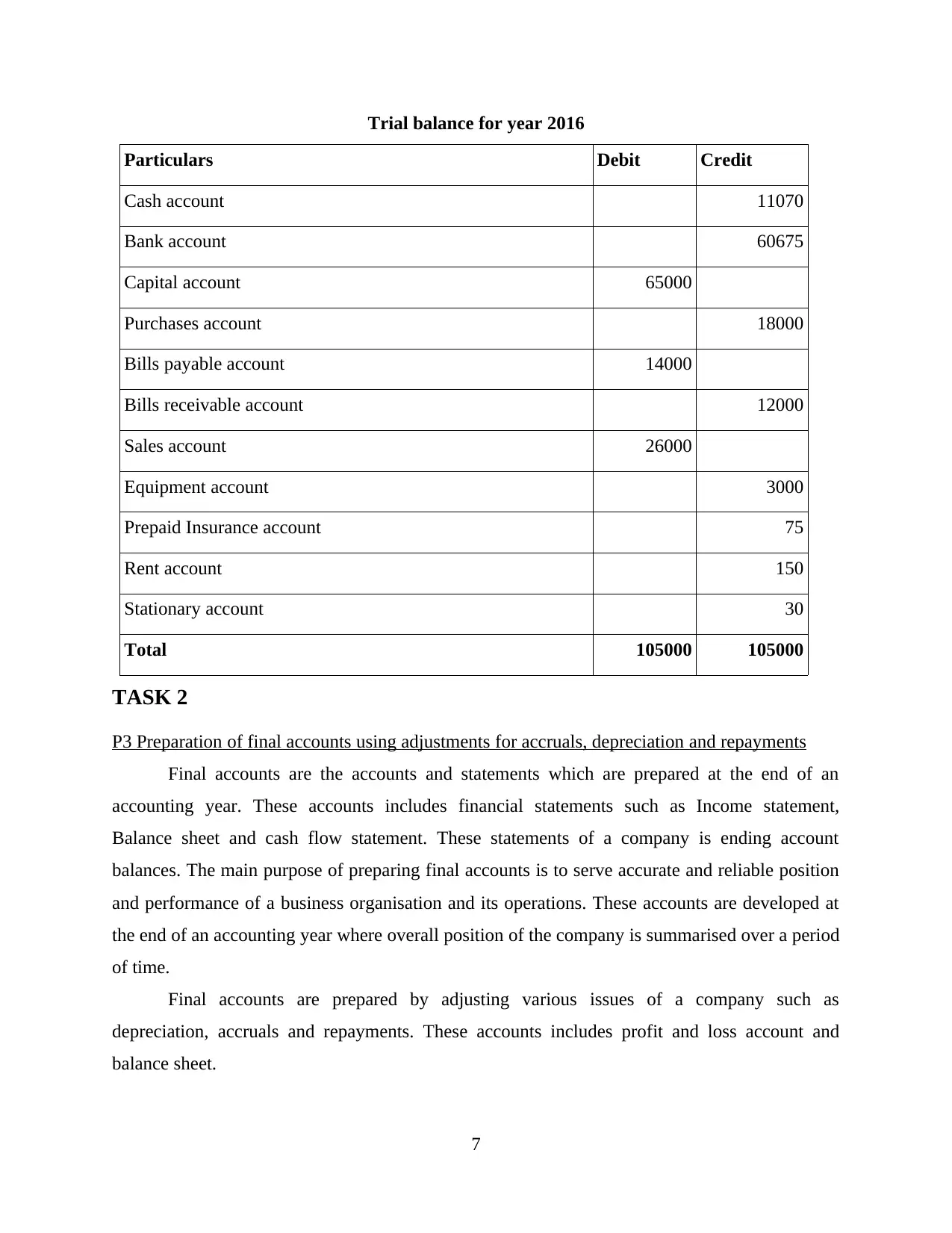
Trial balance for year 2016
Particulars Debit Credit
Cash account 11070
Bank account 60675
Capital account 65000
Purchases account 18000
Bills payable account 14000
Bills receivable account 12000
Sales account 26000
Equipment account 3000
Prepaid Insurance account 75
Rent account 150
Stationary account 30
Total 105000 105000
TASK 2
P3 Preparation of final accounts using adjustments for accruals, depreciation and repayments
Final accounts are the accounts and statements which are prepared at the end of an
accounting year. These accounts includes financial statements such as Income statement,
Balance sheet and cash flow statement. These statements of a company is ending account
balances. The main purpose of preparing final accounts is to serve accurate and reliable position
and performance of a business organisation and its operations. These accounts are developed at
the end of an accounting year where overall position of the company is summarised over a period
of time.
Final accounts are prepared by adjusting various issues of a company such as
depreciation, accruals and repayments. These accounts includes profit and loss account and
balance sheet.
7
Particulars Debit Credit
Cash account 11070
Bank account 60675
Capital account 65000
Purchases account 18000
Bills payable account 14000
Bills receivable account 12000
Sales account 26000
Equipment account 3000
Prepaid Insurance account 75
Rent account 150
Stationary account 30
Total 105000 105000
TASK 2
P3 Preparation of final accounts using adjustments for accruals, depreciation and repayments
Final accounts are the accounts and statements which are prepared at the end of an
accounting year. These accounts includes financial statements such as Income statement,
Balance sheet and cash flow statement. These statements of a company is ending account
balances. The main purpose of preparing final accounts is to serve accurate and reliable position
and performance of a business organisation and its operations. These accounts are developed at
the end of an accounting year where overall position of the company is summarised over a period
of time.
Final accounts are prepared by adjusting various issues of a company such as
depreciation, accruals and repayments. These accounts includes profit and loss account and
balance sheet.
7
⊘ This is a preview!⊘
Do you want full access?
Subscribe today to unlock all pages.

Trusted by 1+ million students worldwide
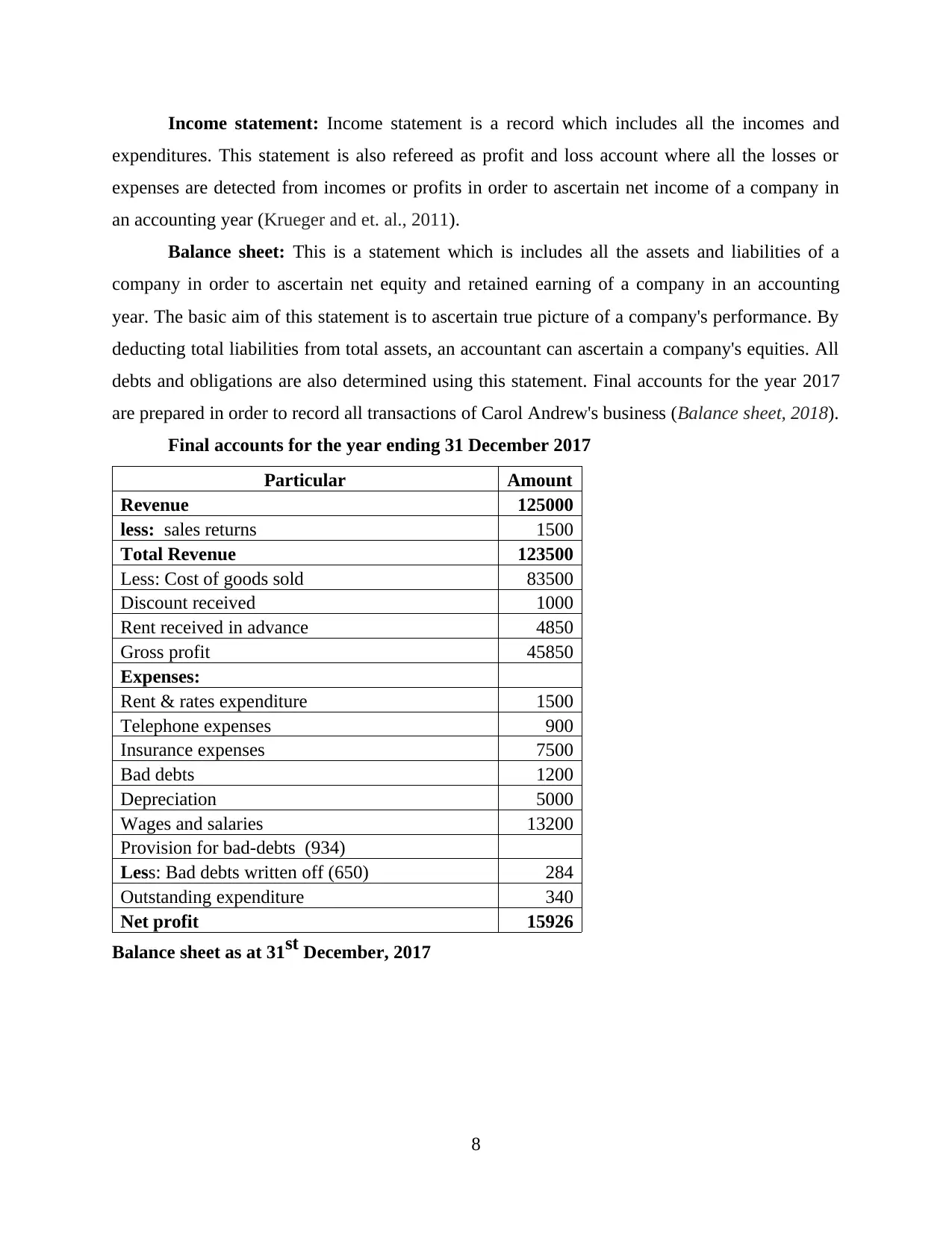
Income statement: Income statement is a record which includes all the incomes and
expenditures. This statement is also refereed as profit and loss account where all the losses or
expenses are detected from incomes or profits in order to ascertain net income of a company in
an accounting year (Krueger and et. al., 2011).
Balance sheet: This is a statement which is includes all the assets and liabilities of a
company in order to ascertain net equity and retained earning of a company in an accounting
year. The basic aim of this statement is to ascertain true picture of a company's performance. By
deducting total liabilities from total assets, an accountant can ascertain a company's equities. All
debts and obligations are also determined using this statement. Final accounts for the year 2017
are prepared in order to record all transactions of Carol Andrew's business (Balance sheet, 2018).
Final accounts for the year ending 31 December 2017
Particular Amount
Revenue 125000
less: sales returns 1500
Total Revenue 123500
Less: Cost of goods sold 83500
Discount received 1000
Rent received in advance 4850
Gross profit 45850
Expenses:
Rent & rates expenditure 1500
Telephone expenses 900
Insurance expenses 7500
Bad debts 1200
Depreciation 5000
Wages and salaries 13200
Provision for bad-debts (934)
Less: Bad debts written off (650) 284
Outstanding expenditure 340
Net profit 15926
Balance sheet as at 31st December, 2017
8
expenditures. This statement is also refereed as profit and loss account where all the losses or
expenses are detected from incomes or profits in order to ascertain net income of a company in
an accounting year (Krueger and et. al., 2011).
Balance sheet: This is a statement which is includes all the assets and liabilities of a
company in order to ascertain net equity and retained earning of a company in an accounting
year. The basic aim of this statement is to ascertain true picture of a company's performance. By
deducting total liabilities from total assets, an accountant can ascertain a company's equities. All
debts and obligations are also determined using this statement. Final accounts for the year 2017
are prepared in order to record all transactions of Carol Andrew's business (Balance sheet, 2018).
Final accounts for the year ending 31 December 2017
Particular Amount
Revenue 125000
less: sales returns 1500
Total Revenue 123500
Less: Cost of goods sold 83500
Discount received 1000
Rent received in advance 4850
Gross profit 45850
Expenses:
Rent & rates expenditure 1500
Telephone expenses 900
Insurance expenses 7500
Bad debts 1200
Depreciation 5000
Wages and salaries 13200
Provision for bad-debts (934)
Less: Bad debts written off (650) 284
Outstanding expenditure 340
Net profit 15926
Balance sheet as at 31st December, 2017
8
Paraphrase This Document
Need a fresh take? Get an instant paraphrase of this document with our AI Paraphraser
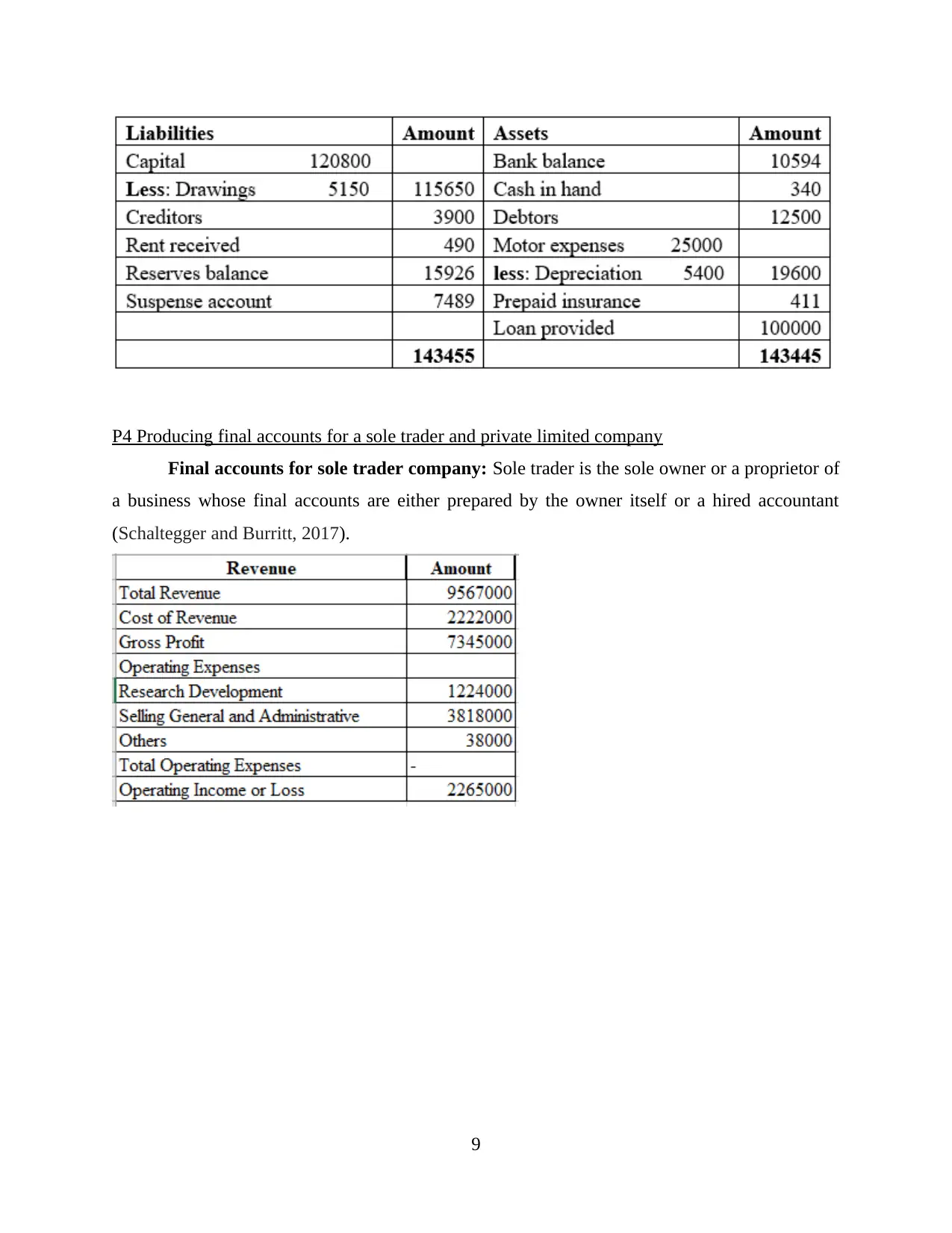
P4 Producing final accounts for a sole trader and private limited company
Final accounts for sole trader company: Sole trader is the sole owner or a proprietor of
a business whose final accounts are either prepared by the owner itself or a hired accountant
(Schaltegger and Burritt, 2017).
9
Final accounts for sole trader company: Sole trader is the sole owner or a proprietor of
a business whose final accounts are either prepared by the owner itself or a hired accountant
(Schaltegger and Burritt, 2017).
9
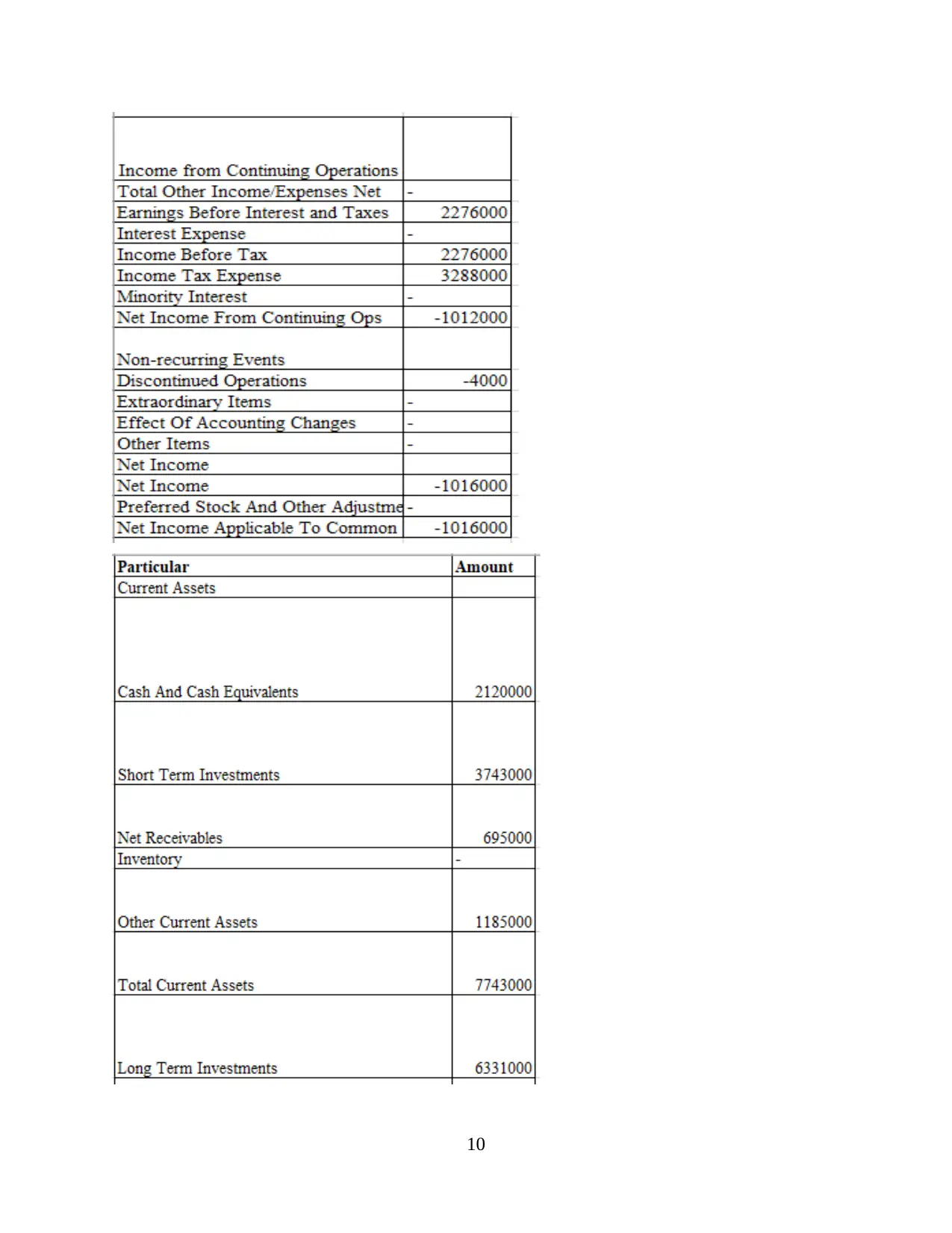
10
⊘ This is a preview!⊘
Do you want full access?
Subscribe today to unlock all pages.

Trusted by 1+ million students worldwide
1 out of 16
Related Documents
Your All-in-One AI-Powered Toolkit for Academic Success.
+13062052269
info@desklib.com
Available 24*7 on WhatsApp / Email
![[object Object]](/_next/static/media/star-bottom.7253800d.svg)
Unlock your academic potential
Copyright © 2020–2025 A2Z Services. All Rights Reserved. Developed and managed by ZUCOL.




